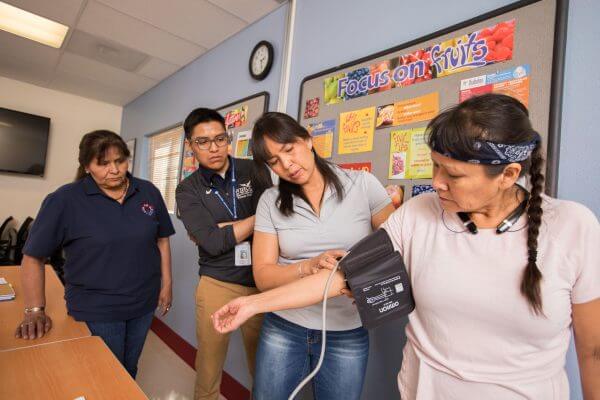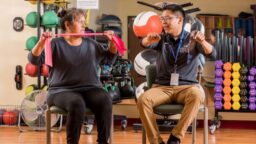For a group of Native American cancer survivors, movement may have been the best medicine.
Such is the conclusion of a recently completed study designed to help a group of Navajo cancer survivors rehabilitate through a specially crafted exercise program.
The study was conducted by the Partnership for Native American Cancer Prevention (NACP), a collaboration between Northern Arizona University (NAU) and the University of Arizona Cancer Center, that aims to improve Native American health outcomes and promote Native American cancer research and health care.
Native American patients face different health outcomes and have different requirements than other demographic populations.
According to the Center for Disease Control and Prevention (CDC), Native Americans face lower overall rates of cancer than non-Hispanic whites in the United States, but they also face higher death rates of specific types of cancer — namely, gallbladder, stomach, liver and kidney cancers. Furthermore, overall cancer death rates for Native Americans increased in a 20-year period from 1990 to 2009, while overall cancer death rates decreased for non-Hispanic whites during this period.
These disparities are influenced by a myriad of factors, including poverty and access to health care. Certain cultural traditions may also impact health incomes and the success of health care programs. For example, many Navajo men and women still practice traditional medicine in addition to Western medical procedures.
The NACP was created on the belief that cultural considerations should be integrated into health care and, furthermore, that health care should be conscious of the beliefs, values and needs of the patient.
“There is an enormous need for translational research with the Navajo Nation and other tribal nations in our region,” Dirk de Heer, an associate professor of health sciences at NAU and a principal investigator in the NACP, said in a statement.
“People often travel very far to receive care and screening, not to mention the additional barriers related to poverty and cultural misalignment in our health care system. Even more importantly, there is a need to train local personnel, support workforce development and work directly with regional providers,” he continued.
The study, which officially concluded on August 31, was initiated in 2013, when the NACP sent out a call for pilot proposals.
After an initial round of research, the research team began a five-year project.
In early phases of the study, the team identified factors that helped or prevented patients from physical exercise and modified the program accordingly. The team also identified that short travel distances and community and family support were strong facilitators of success. As a result, the team expanded the study to include caregivers and opened up clinics in Tuba City and Winslow to complement the original clinic locations in Flagstaff and Leupp.
In total, the program featured 82 Navajo cancer survivors who participated in an 18-week exercise program consisting of 12 weekly meetings with a trainer and six additional weeks of exercise where participants would provide health data from home.
During the weekly meetings, patients would work with Native American trainers, most of whom were also Navajo. Together, they would discuss their goals and progress and set weekly exercise regimens consisting of various cardio and strength training exercises. The trainers would also take the patients’ waist and hip measurements and perform A1C blood tests (used to diagnose Type 2 diabetes and prediabetes) and check blood pressure and other health indicators.

During the six-week unsupervised period, patients would self-report this information.
The entire program was tailored for Navajo patients, some of whom simultaneously worked with traditional medicine men. The trainers, who were familiar with Navajo traditions, practices and prayers, were cognizant of any limitations that would arise as a result.
Sometimes, tradition was incorporated into the sessions. Patients were welcome to wear ceremonial clothing to sessions and use traditional medicines in addition to their Western treatments. In one instance, trainer Denise McClellan herself wore ceremonial clothing during client sessions. In another, a patient carried with him a bag of traditional medicine throughout a physical therapy session. Such traditions were embraced and understood, rather than rejected.
In return, many of the patients committed themselves wholeheartedly to the training regimens. According to the team, preliminary data shows that numerous patients lost weight through six weeks and reported higher quality of life by 12 weeks, leading the trainers to declare the program a success.
“They start to live it, is what they do,” McClellan said in a statement. “We assign their at-home programs, and they try to implement it in their lives. And most of them did! They applied it in their lives.”
But while the study is now over, its mission is not. Going forward, the NACP is training clinics to work with Native American patients and the research team is exploring new projects to gain more insight into treatment approaches for Native American men and women.



